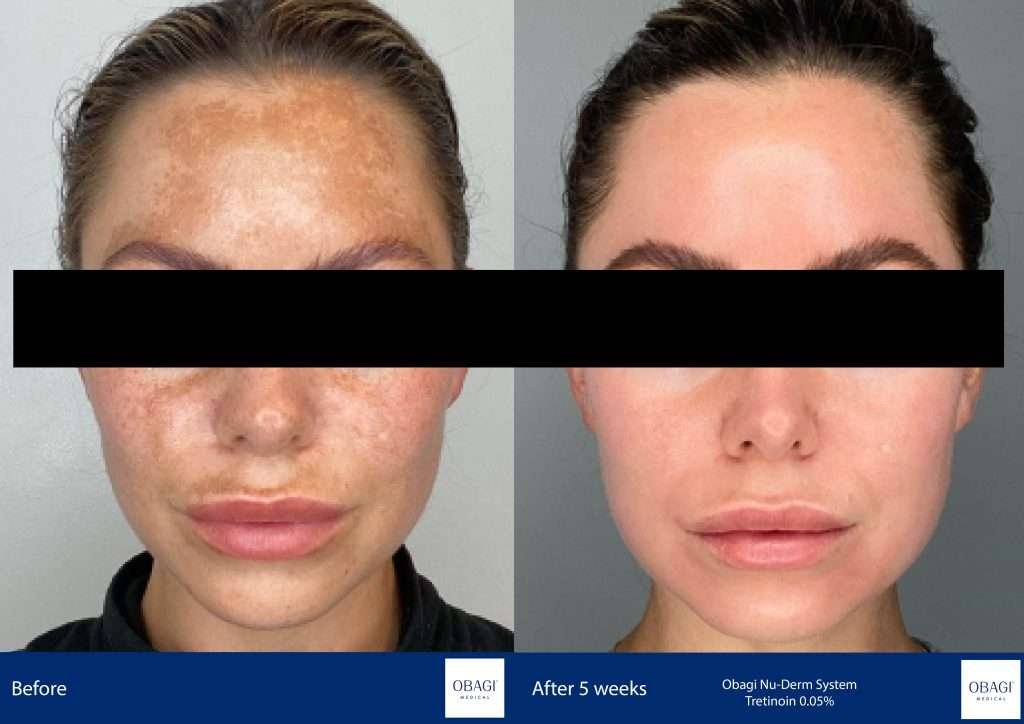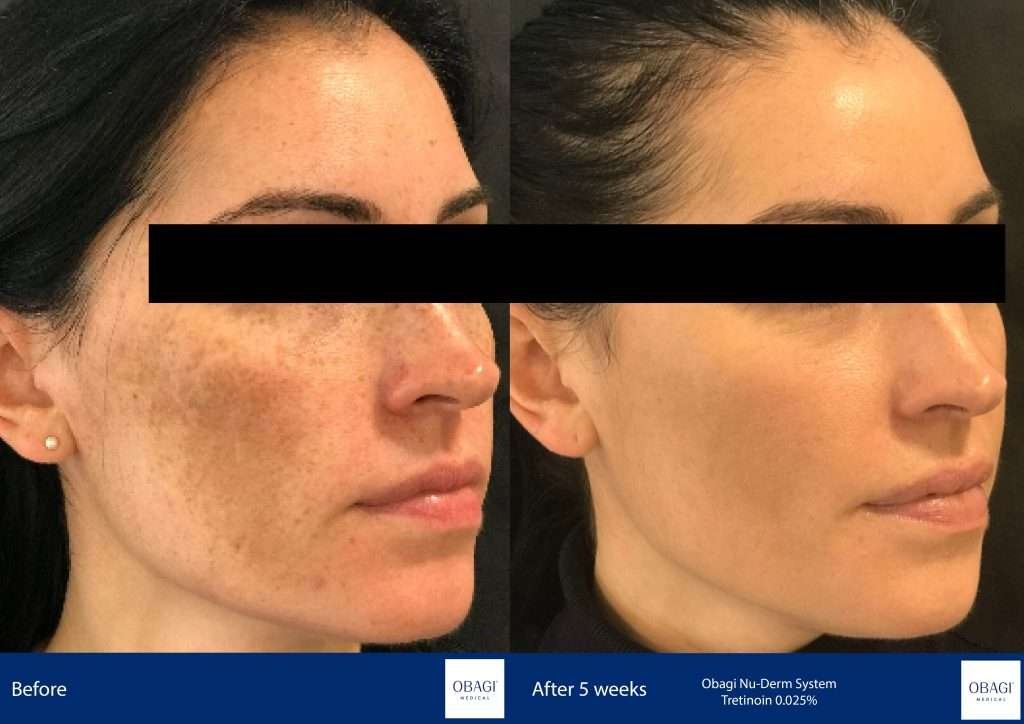Hyperpigmentation or dark spots are a common concern for many people and can affect people of any race or ethnicity, however this skin condition is more common in darker-skinned individuals, in whom the colour tends to be more intense and persist for a longer period than in lighter skin colours. It can appear on the face and neck, but it also appears in other areas such as the hands and feet. Dark spots may be caused by acne, dry skin or sun damage. The most common form of hyperpigmentation is melasma, which is caused by hormones.
In this article we will discuss what causes hyperpigmentation and how to prevent it. We’ll also go over some of the treatments available to help you treat your hyperpigmentation.
What is Hyperpigmentation
Hyperpigmentation is a common condition that makes some areas of the skin darker than others. Extra melanin creates spots or patches that look brown, black, gray, red or pink. The areas are not painful or itchy, but they can make people self-conscious. Several lifestyle changes and treatments can help, especially sun protection and skin care products.

Some examples of hyperpigmentation are; freckles, sun spots, age spots, under-eye dark circles and melasma. It is relatively common and usually a harmless condition, However, for some, it may be an aesthetic annoyance as it can affect any part of the body including the face, neck and hands.
There are several types of hyperpigmentation, the common ones being melasma, sunspots, and post-inflammatory hyperpigmentation:
- Melasma: It is believed to be caused by hormonal changes and may develop during pregnancy. Areas of hyperpigmentation can appear on any area of the body, but they appear most commonly on the stomach and face.
- Sunspots: Also called liver spots or solar lentigines, sunspots are common. They’re related to excess sun exposure over time. Generally, they appear as spots on areas exposed to the sun, like the hands and face.
- Post-inflammatory hyperpigmentation: This is a result of injury or inflammation to the skin. A common cause of this type is acne.
How can you prevent Hyperpigmentation from happening to your skin?
There are several ways to prevent hyperpigmentation from occurring, although not all causes of hyperpigmentation can be prevented, there are some steps you can take to prevent certain instances of hyperpigmentation:
- Avoid direct sunlight. Try to stay out of the sun during the peak hours of 10 am to 2 pm. Sit under a sun umbrella or in the shade when you’re outdoors to minimise your sun exposure.
- Use a hat: Shade your face and scalp with a wide-brimmed hat.
- Incorporate Vitamin C into your beauty routine: Vitamin C is a nutrient-rich antioxidant known for its powerful skin-brightening and anti-aging capabilities that helps neutralise free radicals and limit the damage caused by excessive sun exposure, amongst other things. Try OBAGI MEDICAL® Professional-C® Serum 10%, it Fortifies skin’s defences against free radicals & environmental stressors.
- Apply SPF: Choose sun protection that is at least SPF 15 and use it daily, even in the cooler months, to protect your skin from harmful UV rays. Try OBAGI MEDICAL® HydraFactor® Broad Spectrum SPF 30 – Dual function moisturizing and broad-spectrum SPF 30 cream.
- Avoid scratching or picking at acne, scabs or spots: Doing this can lead to inflammation and darker pigmentation.

How Do You Treat Hyperpigmentation?
There are certain ingredients and products that can help fade the look of dark spots, which may also help reduce the appearance of the brownish patches of hyperpigmentation on your face. Here are some of the things you could try:
- Retinol: This is one of the most talked-about ingredients of the decade, and retinol can be helpful in reducing the appearance of dark pigmentation spots by speeding up natural skin cell turnover. Go for Obagi® Retinol 0.5, Smoother skin texture and even skin tone for a brighter looking complexion.
- Hydroquinone: is a key ingredient that can inhibit enzyme activity during melanin synthesis. You can get hydroquinone 2% over the counter (look for Ambi Skincare Fade Cream), and as a prescription, you can get 4% or 8%. Kojic acid is another ingredient that is known to reduce hyperpigmentation during melanin synthesis. Learn more about Hydroquinone here.
- Niacinamide: Also known as vitamin B3, this powerful skincare ingredient has been clinically proven to reduce the appearance of hyperpigmentation and even skin tone. Choose Daily Hydro-Drops® Facial Serum an innovative hydrator with cutting edge Isoplentix™ technology, provides Vitamin B3, Abyssinian Oil, and Hibiscus oil in their purest forms and leaves skin looking smoother, more radiant, and feeling hydrated all day.
- Vitamin C: Applying a product containing Vitamin C on your skin can help fade marks of hyperpigmentation for a more even-toned complexion. OBAGI MEDICAL® Professional-C® Serum 15%, this powerful daily antioxidant serum is made with 15% pure L-ascorbic, the industry’s gold standard of vitamin C to help defend all day from free radicals and works to brighten skin tone and reduce signs of past skin damage.
- Chemical Peels: Various types of medical chemical peels and treatments based on the use of vitamin C and fruit acids are also very popular. Our Obagi Blue Radiance Peel Packages, Obagi Clinical retexturizing products combine facial exfoliators and anti-aging ingredients, featuring retinol, salicylic, lactic, and glycolic acids, to address a wide array of skin concerns including rough skin, the appearance of fine lines, wrinkles and pores, skin discoloration, blemishes, and more.
- SkinPen Microneedling: This versatile treatment can address a variety of skin conditions such as acne and acne scarring, facial or body scarring, wrinkles, stretch marks and pigmentation. Or it can just be used to revive tired and dull skin, keeping it looking healthy and glowing! SkinPen Microneedling.
At KEEM Medical Aesthetic Clinic, we have extensive experience of dealing with many causes of pigmentation problems. You will initially have a detailed consultation with our Independent Nurse Prescriber Expert.
It is important to consider how the pigmentation occurred and this will be discussed in consultation, so we know how’s best to treat it. At KEEM Medical Aesthetic Clinic we want a long term solution not a quick fix so we will help manage the reason you first got the pigmentation in the first place, ie reduced oil/sebum production if caused by acne to help reduce new breakouts appearing, lighten the pigmentation and prevent it coming back with a good physical filter SPF and or maintenance treatments. For further information, please do not hesitate contact us or use our live chat.


